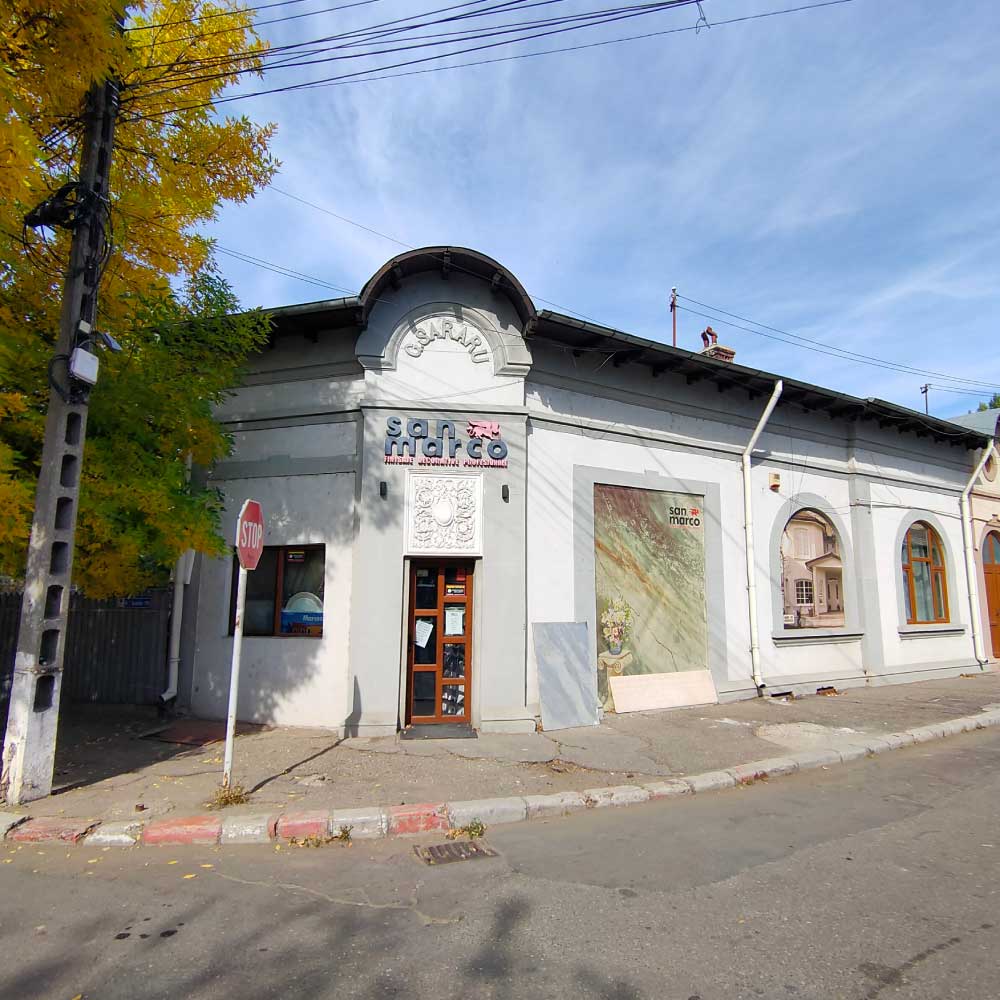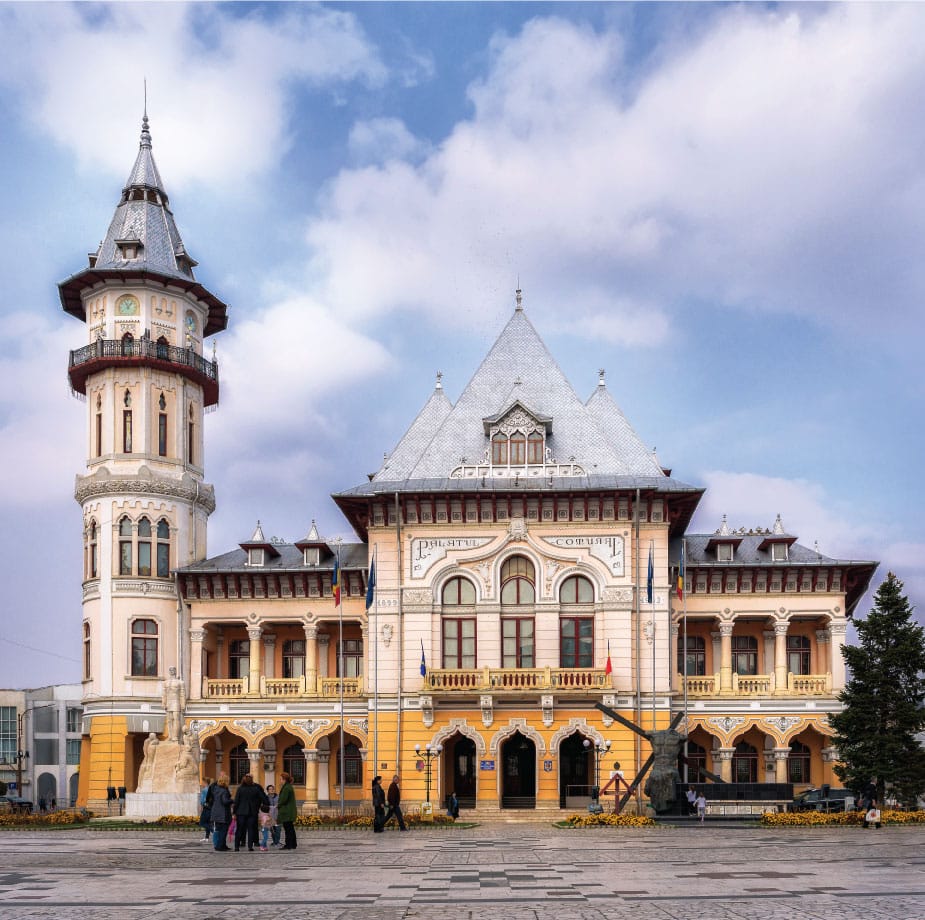
George Săraru House
November 7, 2022
Buzău Court
November 7, 2022English
BUZĂU COMMUNAL PALACE ARCHITECTS ALEXANDRU SĂVULESCU AND SIEGFRIED KOFSINSKI (KOFSZYNSKI)
The decision to build a Palace of Buzău City Hall was taken in 1896, when the mayor of the city was Nicu I. Constantinescu, one of the city’s most prolific municipal councillors. The desire of the residents of Buzău was that the said building be built in a style characteristic to old Romanian architecture. After the architects Ion Mincu and Louis Blanque declined the offer to design the building, the work was entrusted to architect Alexandru Săvulescu, the one who was working on the Post and Telegraph Palace of Bucharest (currently the National History Museum of Romania). The construction works were started in December 1899, the materials being purchased from the county or the country. The stone for the columns and the steps was brought from the quarries of Comănești, Câmpulung and the Saligny quarry of Dobrogea, the stone masons being Italian. The roof was clad with zinc sheet and lead sheet. On 13th November 1901, Alexandru Săvulescu passed away, the works being entrusted to the Polish architect Siegfried Kofsinski (also spelled Kofszynski). The inscription on the frontispiece – Communal Palace – was made on Cararra marble by sculptor Themistocle Vidali from Ploiești. Here’s what Nicolae Iorga said after he visited Buzău and saw the Palace under construction: „A bordering oak forest, a wild, dusty copse has turned into a beautiful park with many avenues and wide perspectives, with kiosks and statues. At the end you can see, making up today the precise middle of the city, the new city hall with a high tower, a long facade in the style of the country, all in stone, carved here and there. When the building is ready, it will undoubtedly be the most beautiful city hall in the country and a very precious ornament for Buzău.” The construction was inaugurated in 1903, in the presence of King Carol I and Crown Prince Ferdinand I. Other top personalities visited the palace over time: Take Ionescu, I. G. Duca, Armand Călinescu, Alexandru Marghiloman, Nicolae Iorga, etc.. The reception hall, the most important and at the same time the most imposing in the palace, was decorated in Venetian style. Solemn gatherings dedicated to evoking the great moments of national history took place, conferences, concerts, balls of various organizations in the city took place here. In the building, in addition to its initial intended use, other institutions of the city were also located in different periods of time: „Alexandru Marghiloman” Library, the Prefecture (since 1942, after it had been severely damaged by the earthquake of 9th/10th November 1940 ), the City sanitary service, „Basil Iorgulescu” City community centre, the National Renaissance Front, the Mixed Court, the Pre-Military Commissariat, and after 1949 the Provisional Committee of Buzău County, the Rayon People’s Council (from 1950), the County Committee of the Romanian Communist Party (from 1968), County Museum (1976), PCR County Committee (since 1976). Since 1990, the building returned to its initial intended use, as the headquarters of Buzău City Hall. The palace suffered serious damage during the two world wars and the earthquakes of 1940 and 1977, requiring extensive restoration works in 1970-1975, 1977 and 1999-2002. The clock, installed in the palace tower, was of German origin, with hammers and bells. Probably, it was also damaged and disappeared after the Second World War. Today, the Communal Palace continues to be an emblematic building for the city of Buzău, unique due to the eclecticism of the architectural styles adopted, but which harmoniously merges into a compact and imposing ensemble. Buzău building of Communal Palace is included in the list of Historical Monuments (BZ-II-m-A-02323).




